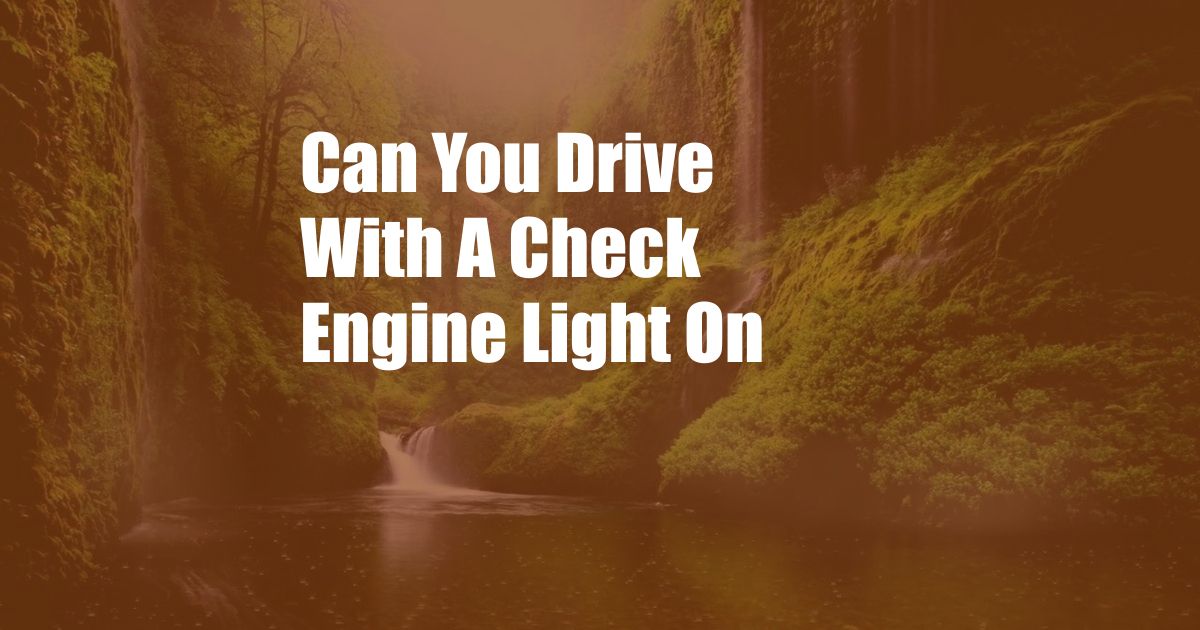
Can You Drive With a Check Engine Light On?
The check engine light (CEL) is a dashboard indicator that signals a potential problem with your vehicle’s engine or emission control system. While it can be alarming, it doesn’t always mean you need to pull over and call a tow truck. Depending on the nature of the issue, you may be able to drive for a short period with the CEL on.
However, it’s important to understand the potential risks and consequences of driving with the check engine light on. In some cases, it could indicate a serious issue that could damage your vehicle or even pose a safety hazard. Therefore, it’s always best to get the issue checked out by a qualified mechanic as soon as possible.
Severity of Check Engine Light Issues
Minor Issues
Some check engine light issues are relatively minor and may not affect the drivability of your vehicle. These could include issues such as a loose gas cap, a faulty oxygen sensor, or a problem with the evaporative emissions system. In these cases, you may be able to drive for a short distance to get to a mechanic or auto parts store to have the issue resolved.
Major Issues
However, there are also more serious check engine light issues that can indicate a major problem with your vehicle’s engine or emission control system. These could include issues such as a misfire, a faulty catalytic converter, or a problem with the engine’s timing. In these cases, it’s important to avoid driving the vehicle and have it towed to a mechanic for immediate repair.
Tips and Expert Advice
If you do find yourself driving with a check engine light on, here are a few tips to help minimize the risk of further damage:
- Drive at moderate speeds and avoid sudden acceleration or deceleration.
- Monitor your vehicle’s temperature gauge and oil pressure gauge for any abnormalities.
- If the check engine light starts flashing, pull over and turn off the engine immediately. This could indicate a serious problem that requires immediate attention.
It’s also a good idea to have your vehicle’s diagnostic trouble codes (DTCs) read by a qualified mechanic. This can help identify the specific cause of the check engine light and determine the severity of the issue.
FAQs
- Q: What does it mean when the check engine light comes on?
- A: The check engine light indicates a potential problem with your vehicle’s engine or emission control system.
- Q: Can I drive with the check engine light on?
- A: It depends on the nature of the issue. Minor issues may allow you to drive a short distance, but serious issues require immediate attention.
- Q: What should I do if the check engine light comes on?
- A: Get your vehicle’s diagnostic trouble codes (DTCs) read by a qualified mechanic to identify the cause of the issue.
Conclusion
While the check engine light can be a cause for concern, it doesn’t always mean you need to stop driving immediately. However, it’s important to understand the potential risks and consequences of driving with the CEL on, especially if it’s accompanied by other symptoms such as engine performance issues or warning lights. By following the tips and expert advice provided above, you can minimize the risk of further damage to your vehicle while getting it to a qualified mechanic for repair.
Are you interested in learning more about your vehicle’s check engine light and other related issues? Stay tuned for more informative articles on our blog!